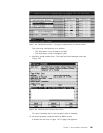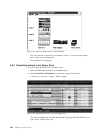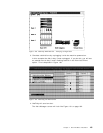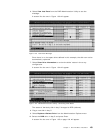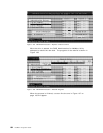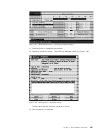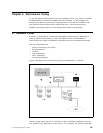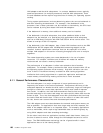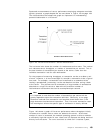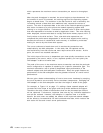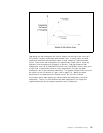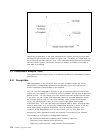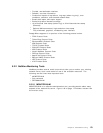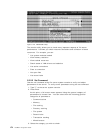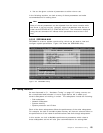LAN adapters and fast disk subsystems. In contrast, database servers typically
need fast processors (or multiple processors) and fast disk subsystems. Both
file and database servers require large amounts of memory for operating system
caching.
Tuning system performance involves determining where the current bottleneck is
and then alleviating this bottleneck. For example, if the bottleneck is the
processor, then a faster processor can be installed or alternatively, the CPU load
can be reduced by using bus master LAN and disk adapters.
If the bottleneck is memory, then additional memory can be installed.
If the bottleneck is the disk subsystem, then either additional disks or disk
adapters can be installed, or a specialized high performance disk subsystem
such as an IBM Array Controller with IBM Fast SCSI-2 drives can be used. This
allows an overlap of disk I/O requests.
If the bottleneck is the LAN adapter, then a faster LAN interface such as the IBM
LANStreamer MC 32 adapter with 40 MBps data streaming support can be
installed. Another optimization technique that can be employed is to utilize
multiple LAN adapters in the server increasing throughput onto one or multiple
segments.
The network operating system can create bottlenecks in its use of system
resources. For example, inefficient use of buffers will waste the memory
resources and can cause a memory bottleneck.
The performance of a subsystem is often inter-related to that of another
subsystem. For example, memory constraints often cause excessive disk I/O as
the operating system accesses virtual memory. High disk utilization can also
occur if there is insufficient memory available for disk caching algorithms.
Ineffective disk caching algorithms for a particular application workload can
create memory constraints by wasting cache that is never accessed.
5.1.1 General Performance Characteristics
The disk subsystem is a major component of server performance and is
frequently the location of the server bottleneck. Performance efficiency of this
subsystem depends on whether the disk cache is sufficiently large and intelligent
enough to contain the correct data required to satisfy most network requests
from cache. In addition, the hard disks themselves must be fast enough to
provide read data for the cache and empty the cache quickly when data must be
written to disk. Thus, the disk subsystem must offer performance that can keep
the cache filled with useful data. Failure to do so results in a lower disk cache
hit rate, slower user access times and decreased performance.
The LAN adapter must move data between the network and system memory as
fast as possible. For applications that issue large read and write requests, the
width of the adapter data bus is an important factor. For example, applications
such as multimedia, which require high bandwidth data can benefit greatly by
using 32-bit adapters and data streaming technology.
On the other hand, when an application transfers small data frames,
latency
or
the time it takes to move a frame through the LAN adapter becomes a critical
factor. The IBM LANStreamer technology can be of great benefit in these
applications due to its low latency design.
168 NetWare Integration Guide



